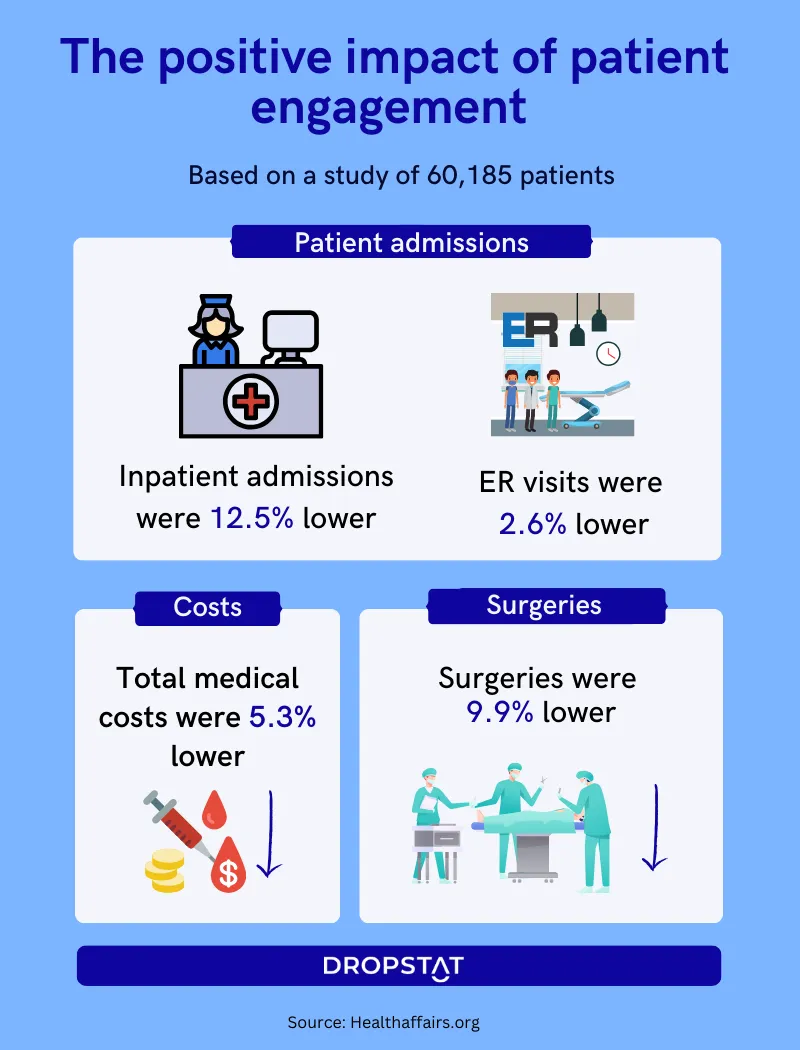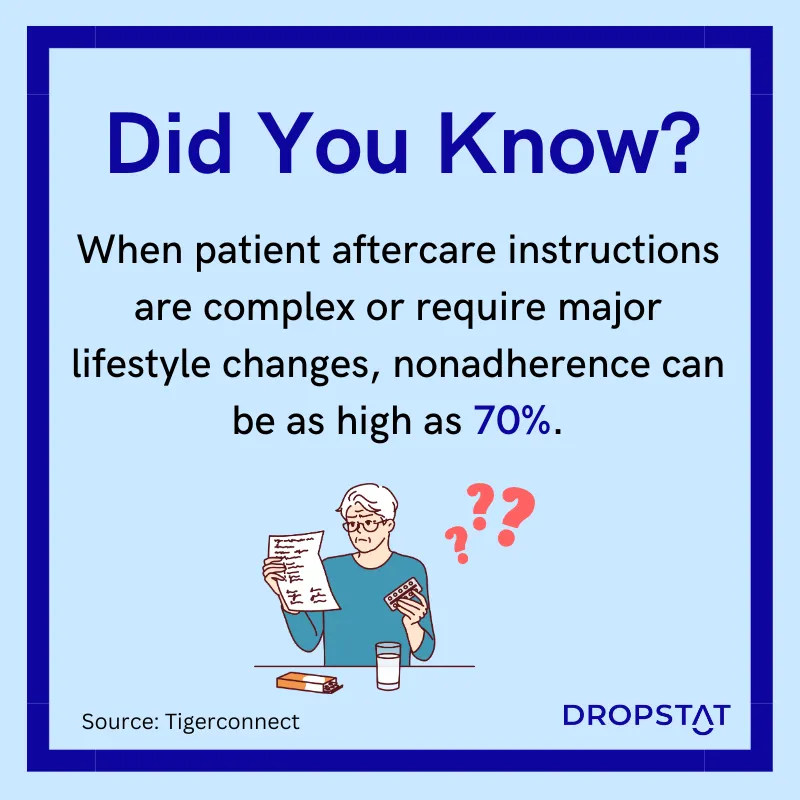Patient engagement involves an active and committed partnership between patients, their families, and their healthcare providers. Patient engagement requires input from both sides: the healthcare professionals and the patients. Health care providers need to engage and educate patients and encourage patient involvement. Patients have to respond by joining in the decision-making and adhering to treatment plans.
Why is patient engagement in healthcare so important?
Here are some of the main benefits of improving patient engagement in healthcare:
Increased patient satisfaction – Patients actively involved in their treatment plan feel heard and respected. This increases patient satisfaction with the healthcare provider, increasing patient loyalty and more likely to recommend their provider to others.
Improved patient outcomes – When patients are engaged in their health, they are more likely to catch symptoms of illness in their earliest stages, make better medical choices, and adhere to their treatment plans. This leads to better health outcomes and long-term well-being.
Reduced healthcare costs – Engaged patients recover faster and have shorter hospital stays, freeing up hospital and provider resources. This reduces the cost of healthcare for both patients and providers.
Reduced hospital readmissions – Patients actively involved in their care are more likely to follow treatment instructions after leaving the hospital. They are at a lower risk of being readmitted to hospital within 30 days.

The challenges of patient engagement
The main barriers to engagement are a lack of patient education and poor communication between healthcare providers and patients. When patients aren’t appropriately educated about their medical situation and their treatment options or when they don’t understand the health terminology that is being used to describe their symptoms and treatment plans, patients can become disengaged.
Patient participation can also be affected when patients don’t have the digital access required to make informed decisions or when healthcare providers don’t have the time to engage patients properly in their care, leading to a lack of adherence to treatment plans and poor health outcomes.
Patient engagement solutions
Here are some effective patient engagement strategies that can boost patient engagement in your facility and drive improved health outcomes.
1. Engage with patients from the earliest stage
Don’t wait to engage with your patients when they first visit your facility. You can start the process before their first visit with some pre-visit procedures like intake forms and appointment reminders. Patients starting their paperwork before they come for an appointment helps them think about their medical history with a better frame of mind. Filling out the initial paperwork before a patient’s first visit helps to streamline the intake process and makes it less stressful for both healthcare providers and patients.
2. Ensure appointments have sufficient time to support patient engagement
Make sure appointment times are long enough for clinicians to have the time to educate their patients properly about their illnesses and treatment plans with enough time to answer their questions. Patients who feel heard and supported become more engaged in their care.
3. Practice shared decision-making
Traditionally, healthcare providers would diagnose their patients’ illnesses and generate a treatment plan that they feel fit without the patient’s input. However, when you actively involve your patients by educating them about their treatment options and building a personalized treatment plan, hospital stays are shorter, and patient outcomes are much higher.
4. Keep patients engaged after discharge
Just because a patient is discharged doesn’t mean they are healed. Many patients don’t follow their aftercare instructions, especially when complicated or require them to adopt a new lifestyle. Healthcare providers can increase patient adherence to aftercare treatment by engaging with their patients. This can include following up on symptoms to look out for, whether they are taking their medications as instructed, and payment reminders. Patient engagement after discharge boosts trust in the healthcare provider and can reduce readmissions.

5. Personalize patient engagement
When reaching out to patients, use their preferred method of communication to effectively engage with them. Keep these forms of contact, follow-ups, or reminders personalized. Address them by their first name and initiate the conversation with a friendly, welcoming message.
6. Make the shift to digital patient engagement
Digital patient engagement programs allow healthcare providers to communicate with patients through digital channels that are convenient and accessible for the patient. This includes using healthcare mobile apps, wearable and smart devices, a patient portal, and remote patient monitoring. This strategy has to account for patient access to technology.
How Dropstat helps to improve patient engagement
Dropstat is an advanced AI scheduling app that helps to keep healthcare organizations safely staffed at all times. This ensures your nurses are not overworked and have the time and resources to provide adequate care and support optimal patient engagement initiatives. Nurses who work in a safely staffed environment can effectively educate their patients about their treatment plans, engage them in self-care, and answer any patient questions.
Schedule a demo now and learn how to bring your patient and family engagement initiatives to the next level.







